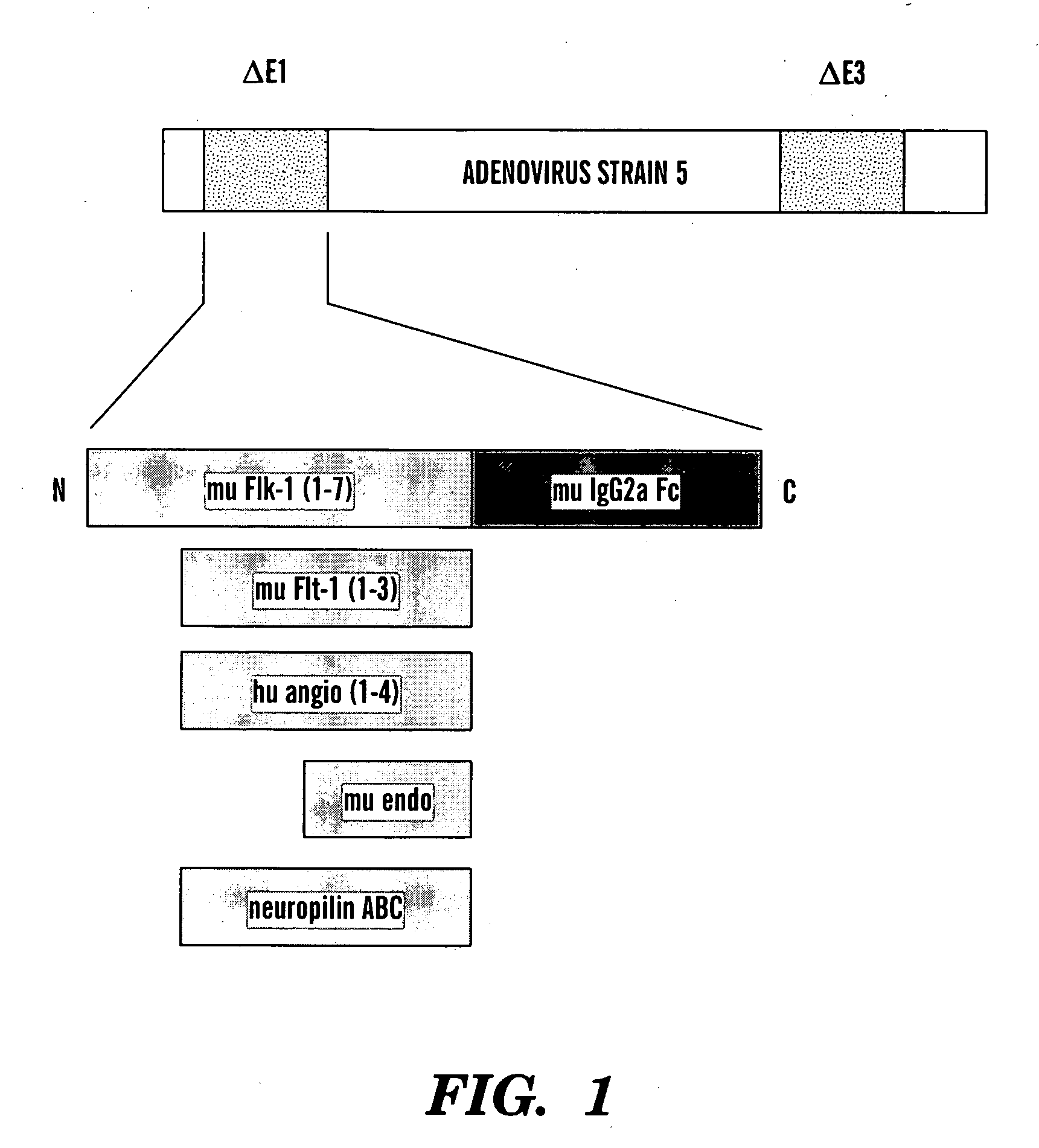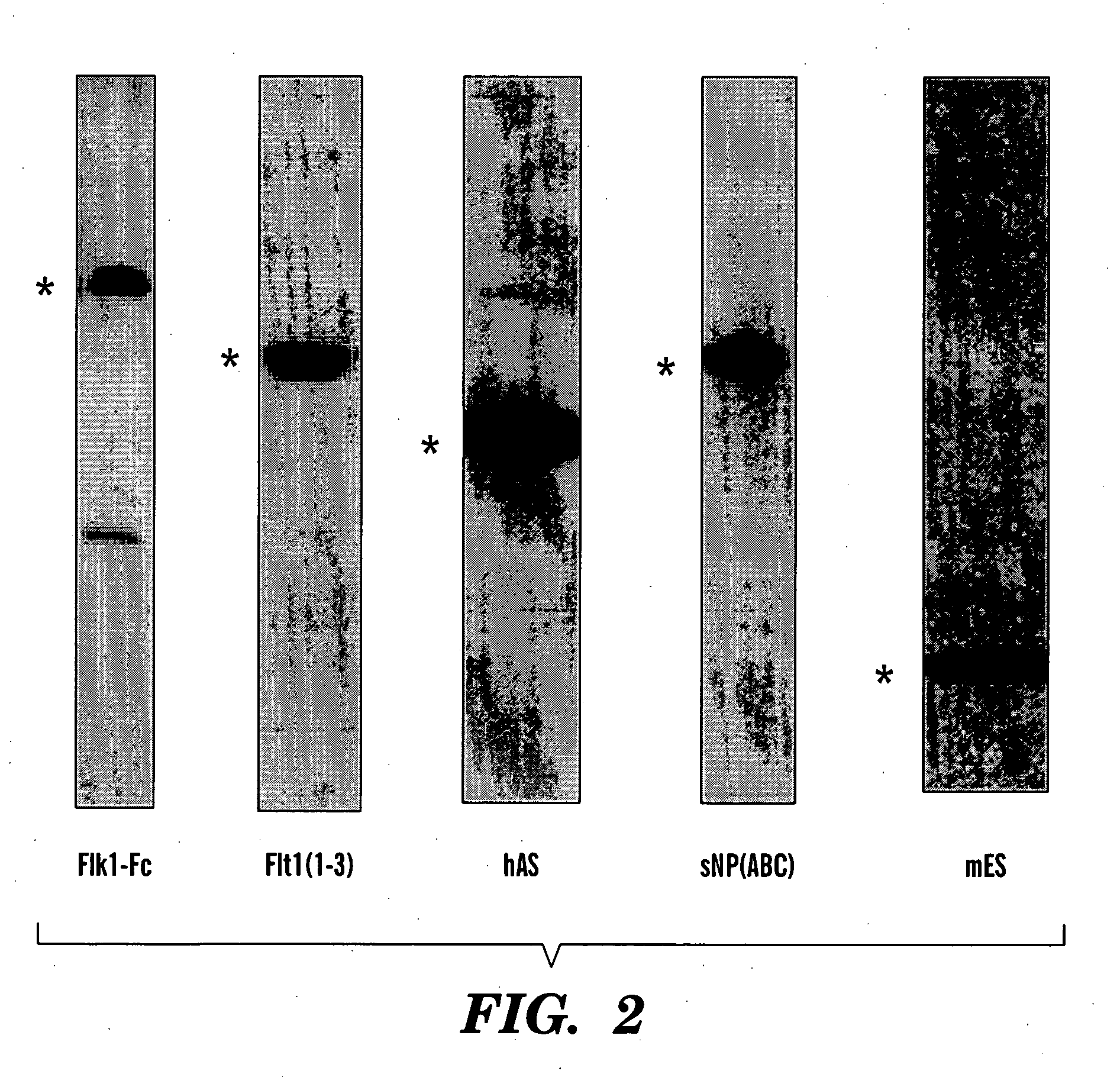Method for treating cancer and increasing hematocrit levels
a hematocrit level and cancer technology, applied in the field of cancer and low hematocrit levels, can solve the problems of reducing the oxygen transport of blood cells to the tissues of the body, limiting the use of cytoreductive therapies, and not showing effective systemic angiogenesis inhibition using any of the presently available methods, so as to inhibit undesired angiogenesis, increase the number of red blood cells, and determine the effect or endpoint of treatmen
- Summary
- Abstract
- Description
- Claims
- Application Information
AI Technical Summary
Benefits of technology
Problems solved by technology
Method used
Image
Examples
example
[0104] Construction and Purification of Recombinant Adenoviruses
[0105] Murine Flk1-Fc cDNA was a gift of T. Niederman and contained the murine Flk1-Fc signal peptide, and the murine Flk1 ectodomain (to TIRRVRKEDGG [SEQ ID NO: 1], aa 731) fused to the murine IgG2α Fc fragment. Flk1-Fc cDNA was cloned with XbaI and BamHI ends into the adenoviral shuttle vector HIHG Add2 (J. Gray and R. C. M., unpublished), which contains a polylinker flanked by regions of homology from the E1 locus of adenovirus strain 5. Murine Flt1 (1-3) was amplified by PCR from Flt-1 cDNA (S. Soker), facilitating addition of a C-terminal 6×His tag, digested with EcoRI and SalI and ligated into HIHG Add2. An alternative version of soluble Flt1 was produced by excising a DraIII-SalI fragment of HIHG Add2, containing the C-terminal 6×His tag, and ligating this into pDisplay (Invitrogen, Carlsbad, Calif.) at blunted BglII and SalI sites to produce an in-frame fusion with the N-terminal HA tag in pDisplay. The resulta...
PUM
 Login to View More
Login to View More Abstract
Description
Claims
Application Information
 Login to View More
Login to View More - R&D
- Intellectual Property
- Life Sciences
- Materials
- Tech Scout
- Unparalleled Data Quality
- Higher Quality Content
- 60% Fewer Hallucinations
Browse by: Latest US Patents, China's latest patents, Technical Efficacy Thesaurus, Application Domain, Technology Topic, Popular Technical Reports.
© 2025 PatSnap. All rights reserved.Legal|Privacy policy|Modern Slavery Act Transparency Statement|Sitemap|About US| Contact US: help@patsnap.com



